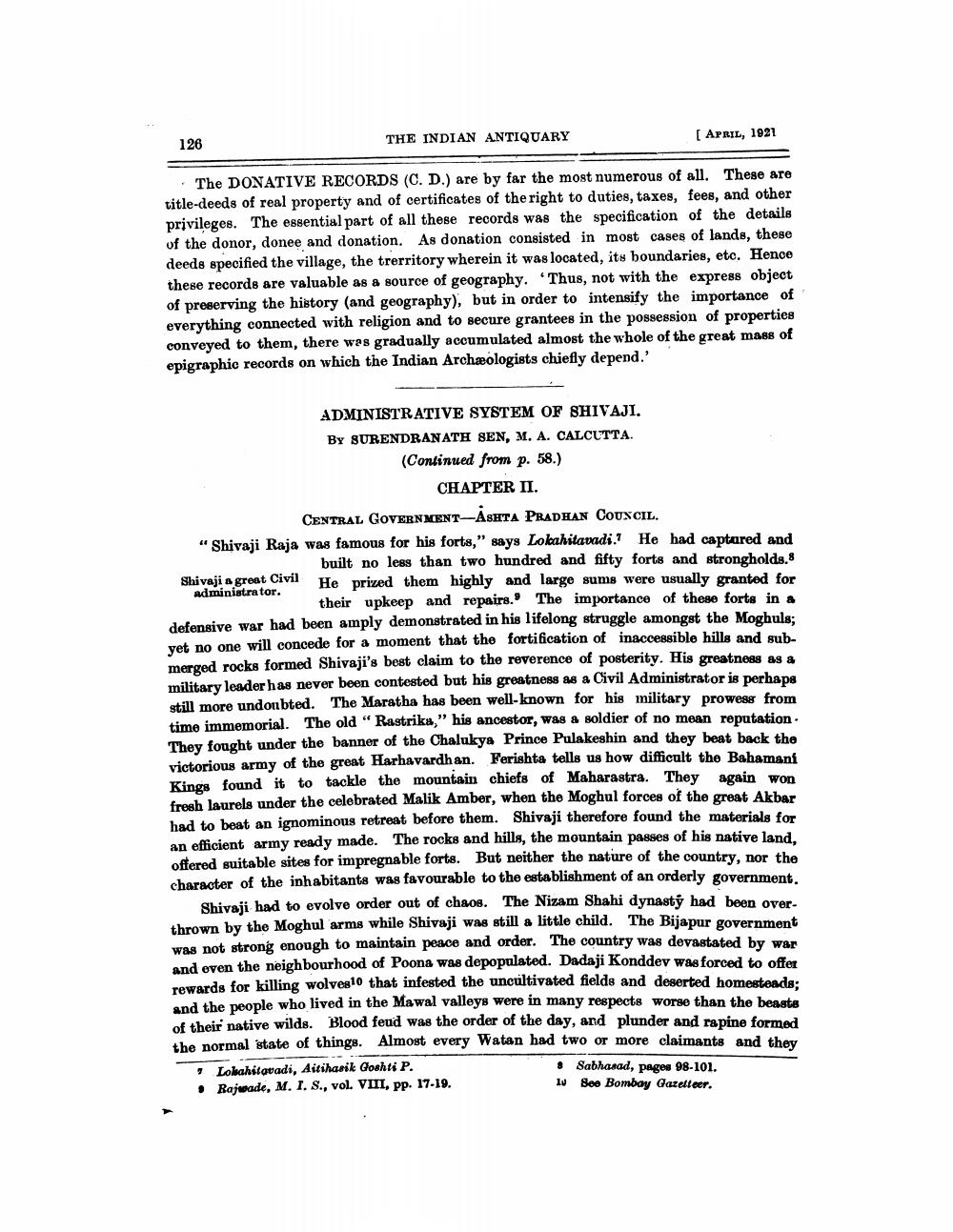________________
126
THE INDIAN ANTIQUARY
[ April, 1921
The DONATIVE RECORDS (C. D.) are by far the most numerous of all. These are title-deeds of real property and of certificates of the right to duties, taxes, fees, and other privileges. The essential part of all these records was the specification of the details of the donor, donee and donation. As donation consisted in most cases of lands, these deeds specified the village, the trerritory wherein it was located, its boundaries, etc. Hence these records are valuable as a source of geography. Thus, not with the express object of preserving the history (and geography), but in order to intensify the importance of everything connected with religion and to secure grantees in the possession of properties conveyed to them, there was gradually accumulated almost the whole of the great mass of epigraphic records on which the Indian Archæologists chiefly depend.'
ADMINISTRATIVE SYSTEM OF SHIVAJI. BY SURENDRANATH SEN, M. A. CALCUTTA.
(Continued from p. 58.)
CHAPTER II. CENTRAL GOVERNMENT-ASHTA PRADHAN COUNCIL, "Shivaji Raja was famous for his forts," says Lolahitavadi. He had captared and
built no less than two hundred and fifty forts and strongholds.8 Shivaji a great Civil
Vil He prized them highly and large sums were usually granted for administrator.
their upkeep and repairs. The importance of these forts in a defensive war had been amply demonstrated in his lifelong struggle amongst the Moghuls: yet no one will concede for a moment that the fortification of inaccessible hills and submerged rocks formed Shivaji's best claim to the reverence of posterity. His greatness as a military leader has never been contested but his greatness as a Civil Administrator is perhaps still more undonbted. The Maratha has been well-known for his military prowess from time immemorial. The old " Rastrika," his ancestor, was a soldier of no mean reputation They fought under the banner of the Chalukya Prince Pulakeshin and they beat back the victorious army of the great Harhavardhan. Ferishta tells us how difficult the Bahamani Kings found it to tackle the mountain chiefs of Maharastra. They again won fresh laurels under the celebrated Malik Amber, when the Moghul forces of the great Akbar had to beat an ignominous retreat before them. Shivaji therefore found the materials for an efficient army ready made. The rocks and hills, the mountain passes of his native land. offered suitable sites for impregnable forts. But neither the nature of the country, nor the character of the inhabitants was favourable to the establishment of an orderly government.
Shivaji had to evolve order out of chaos. The Nizam Shahi dynasty had been over thrown by the Moghul arms while Shivaji was still a little child. The Bijapur gove was not strong enough to maintain peace and order. The country was devastated by war and even the neighbourhood of Poona was depopulated. Dadaji Konddey was forced to offer rewards for killing wolves that infested the uncultivated fields and deserted homestead. and the people who lived in the Mawal valleys were in many respects worse than the beaste of their native wilds. Blood feud was the order of the day, and plunder and rapine formed the normal state of things. Almost every Watan had two or more claimants and thev • Lokahstavadi, Aitihasik Goshti P.
• Sabhasad, page 98-101. • Rajwade, M. I. S., vol. VIII, pp. 17-19.
14 See Bombay Gazelleer.




